Gareth Davies’ Rugby World Cup interception got a nation roaring against Australia but it’s all part of a wider masterplan by Warren Gatland.
Robert Rees takes a look at just how Davies fits into Wales’ defensive structure.
Davies’ defence works in odd formation
Gareth Davies works in a technique that is odd for a scrum half, he works tight to the last phase, leaves forwards outside of him and tactically attacks the opposition with his epic line speed.
It took just six minutes for him to register his first interception of the game against Australia.
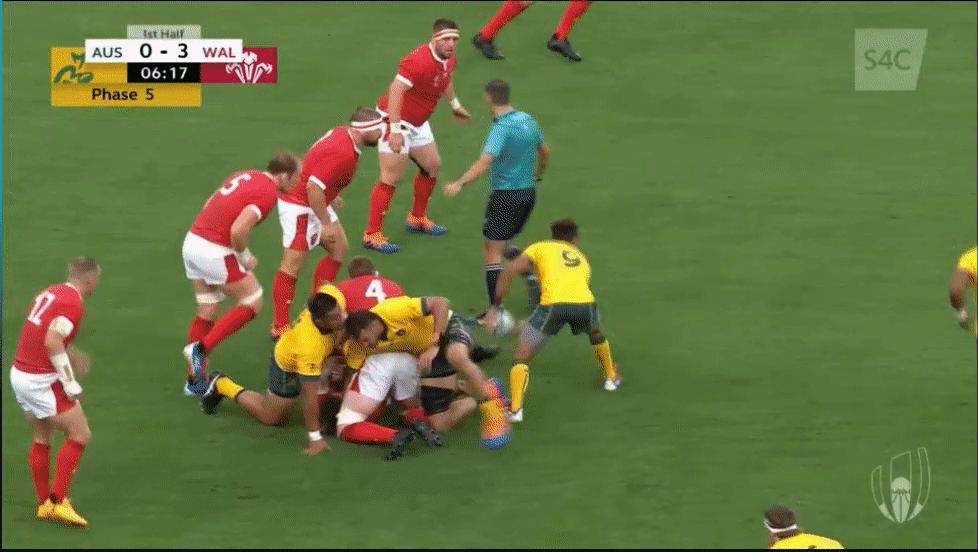
He reads the deeper pass and gets off the mark quickly to earn the turnover. It’s how he reads this pass that fits into Wales’ system.

The slow flat ball initially from Genia to Foley allowed Davies to get up to speed where he then picks off the deeper ball.
He targets the passes that miss the first receiver and got to second base. Australia get caught out and rely on Haylett-Petty to make the tackle, but Wales have front foot ball to attack with.
Widening the scrum defence channel
Davies’ work off the back of the opposition scrum is something to be admired. He reads the direction of play quickly and accurately before taking off to narrow down their attacking channel.
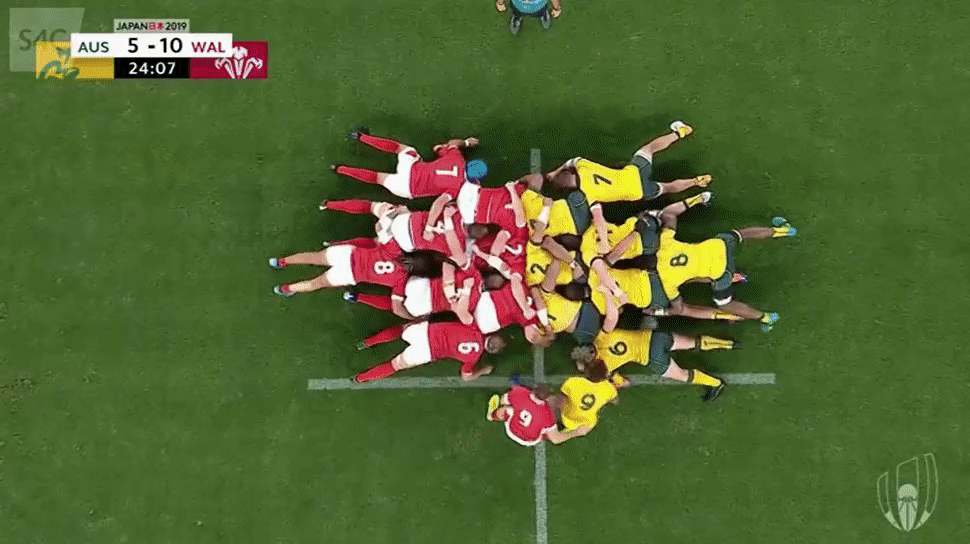
By sitting behind the scrum and pouncing at the ideal moment he pushes the opposition backline out wider, creating less space which cuts down their time.
This simple ball tracking forces errors out wide as an indirect consequence of Davies’ positioning, in this kick it was kicked away.

His style of play is built on applying pressure. How he dopes this varies. He can move the space around the park (see above) but his quick line speed also forces a deeper pass and quicker release from the ball carrier.
It was this that caused Australia issues in the first half, as Foley and Genia built up handling errors, kicking errors and passing errors.
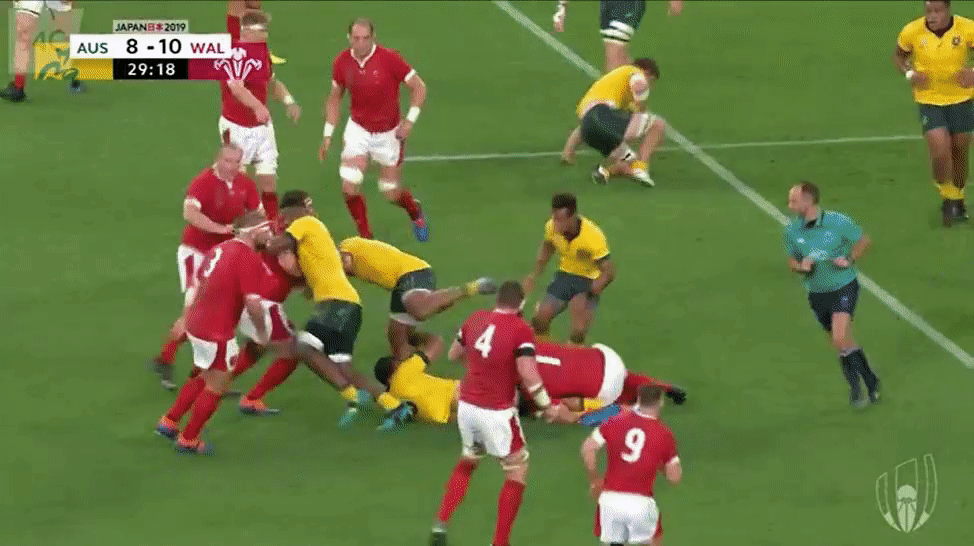
Straight after the restart after the penalty to close the gap to 10-8 he pressurises Foley at first receiver, following the deeper ball from Genia and forces a bad pass behind the backline.
This forced another kick turnover from Australia.
Interception try built from pressure mounting
The interception try from Gareth Davies was not only a shade of a try in a big game back in the 2015 Rugby World Cup but had a method behind how he managed it.
By attacking the deeper passing only he left Genia with doubt in his mind, but not enough that he’d totally switch away from that style of play.
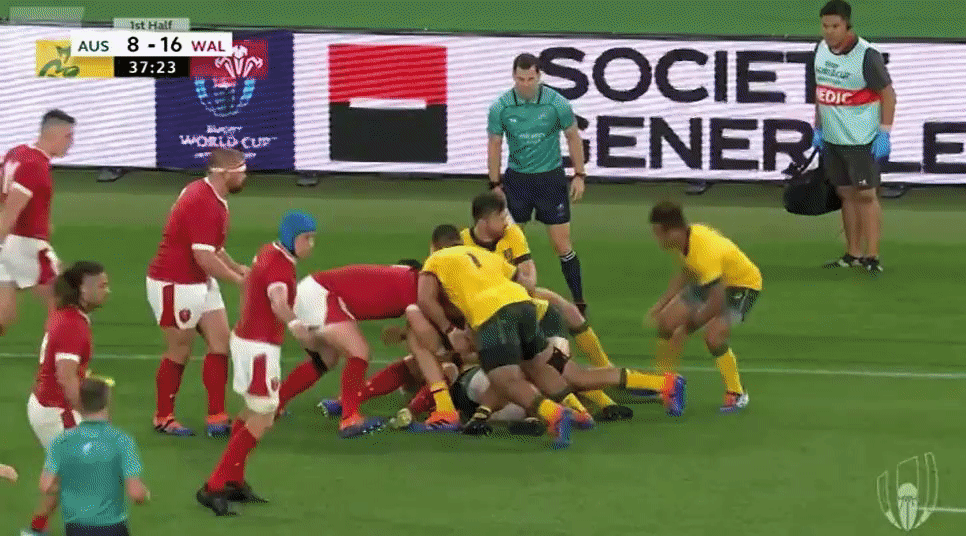
He reads the longer pass from Genia before it’s released from the base of the ruck, it goes too long from an Australian point of view, from an initiating point of slow ball.
His line speed does the rest as he chooses his running line, again the second receiver is the target man, so he runs between the first and second men, and gets an easy seven points.

The pass needed to be to the first receiver in this instance from Genia which would take away Davies’ initial line speed hit and play read.
The target man was too stationary and flat and this is why Davies found it so easy to read and intercept.
The try was the second intercept of the day and Davies nearly got a third on 49 minutes.
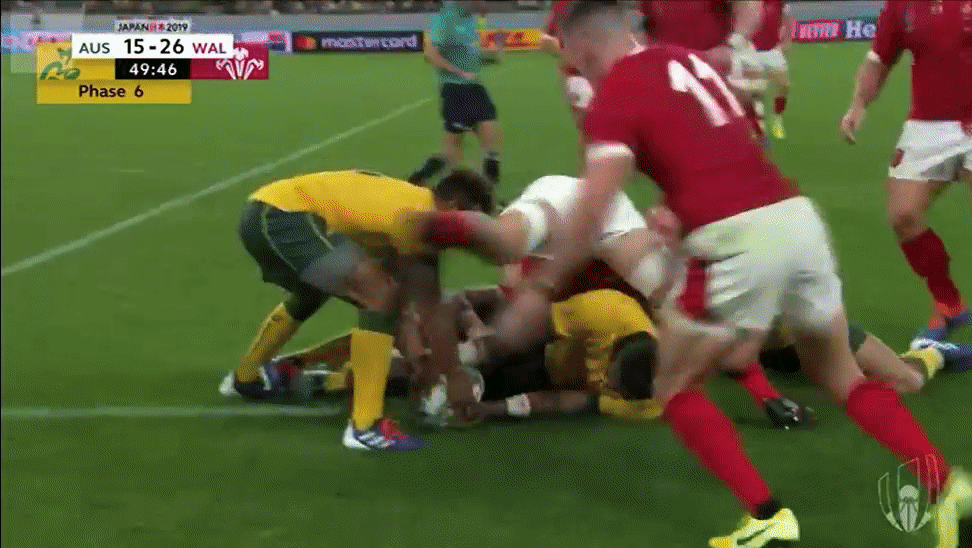
Davies is placed as the fifth man in the defensive line, on the wide side of the field. He is inside both Josh Navidi and Justin Tipuric and forces a deeper ball in latter plays, which takes the immediate pace of the attack.
The deeper ball is utilised to lower the risk of an interception and five to ten metre loss on the ruck.
This allows the likes of Navidi and Tipuric to get up field and force Australia backwards.

Even when the Australian first and second receivers tighten up Davies hunts for the deeper pass to pick off.
Line speed crucial, but it’s more than just pace
Yes, Gareth Davies has a lot of pace off the mark which will help him out in these situations. BUT! There’s a method to how he goes about sprinting out and disrupting the flow of play.

Catching the Australian attacking line a few yards from where they’re standing means they lose ground. This is exactly what Davies does here and forces them into a defensive shift for that phase.
They retain the ball but what we mean by ‘defensive shift’ is that they had to alter their structure to commit attackers to the breakdown in order to secure the ball or Wales could turn it over easily.
This allows the Welsh defence to set, takes away Australian width and can force errors and a turnover if done persistently.
‘Force’ player – Gareth Davies
Davies is used as a ‘force’ player. This means he forces the play back inside and nearer the core bulk of support.
It’s part of the Welsh Rugby World Cup gameplan and not just used by Davies as Rhys Patchell uses it the phase before the one were about to discuss.
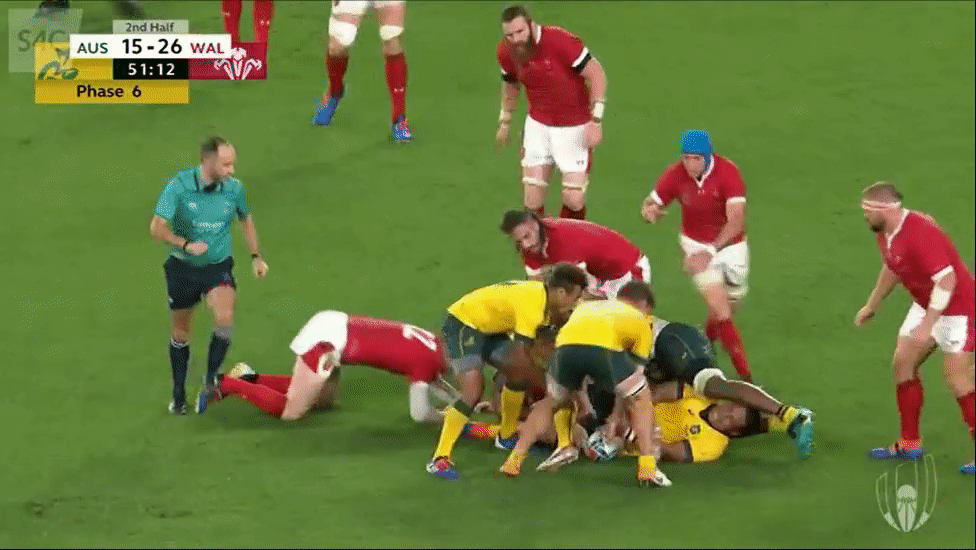
He ‘forces’ the play inside, contains the attack and helps bring the breakdown under siege. Australia need to use three men at the ruck when Nicky Smith arrives.
This slows the play down and allows the extra defenders to shift out wide and help kill the attack.

Davies shoots out but still allows himself to commit and make the tackle on his own, thus making it three on two in Wales favour at that ruck.
Nicky Smith is able to force a two on one jackal contest and Tomas Francis can swivel around the back of the ruck to be at the next phase.
His Rugby World Cup defensive style will certainly be one to keep an eye on for Wales fans.
“Graphics credit @Rreesrugby/Image courtesy of World Rugby”




